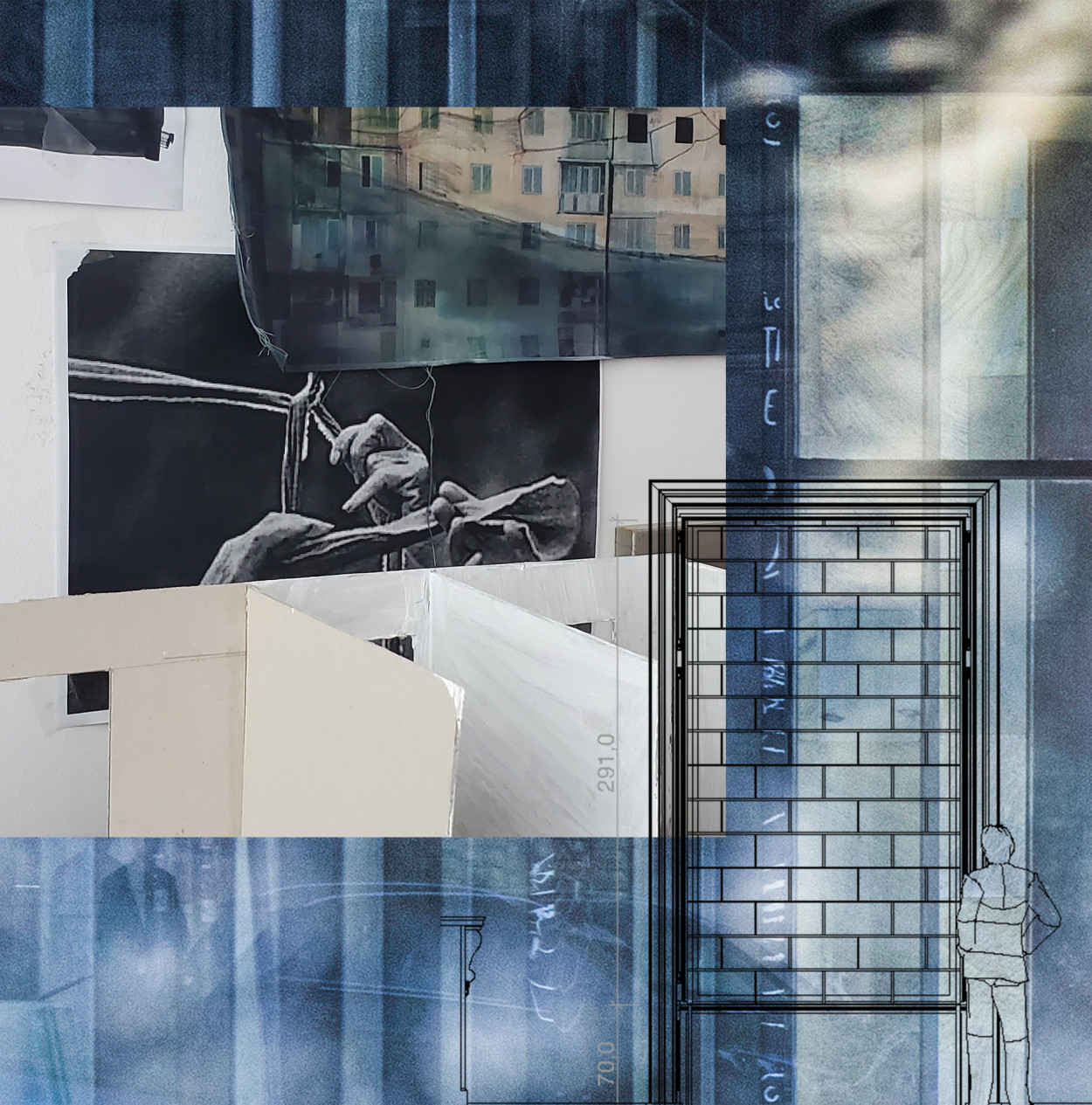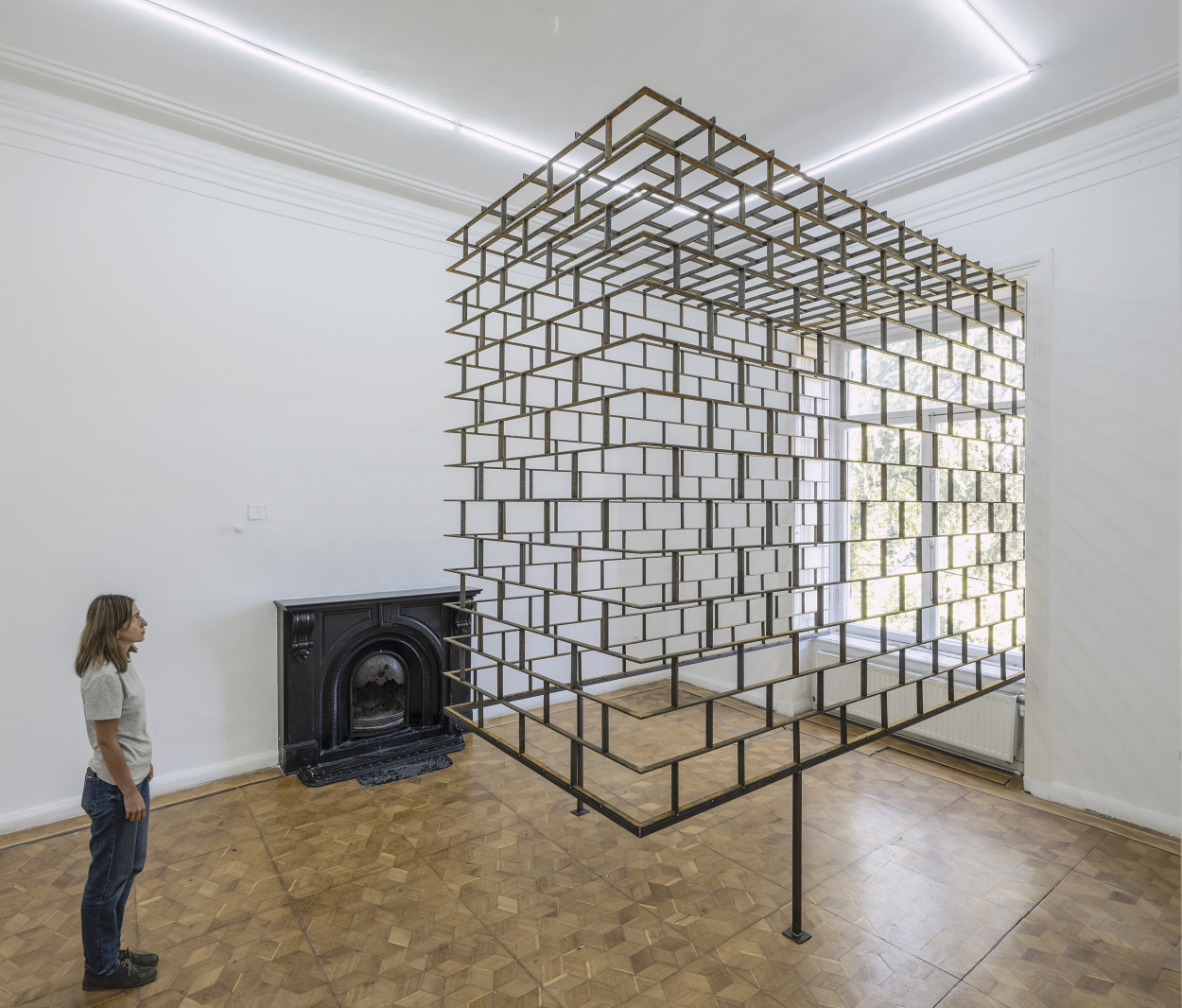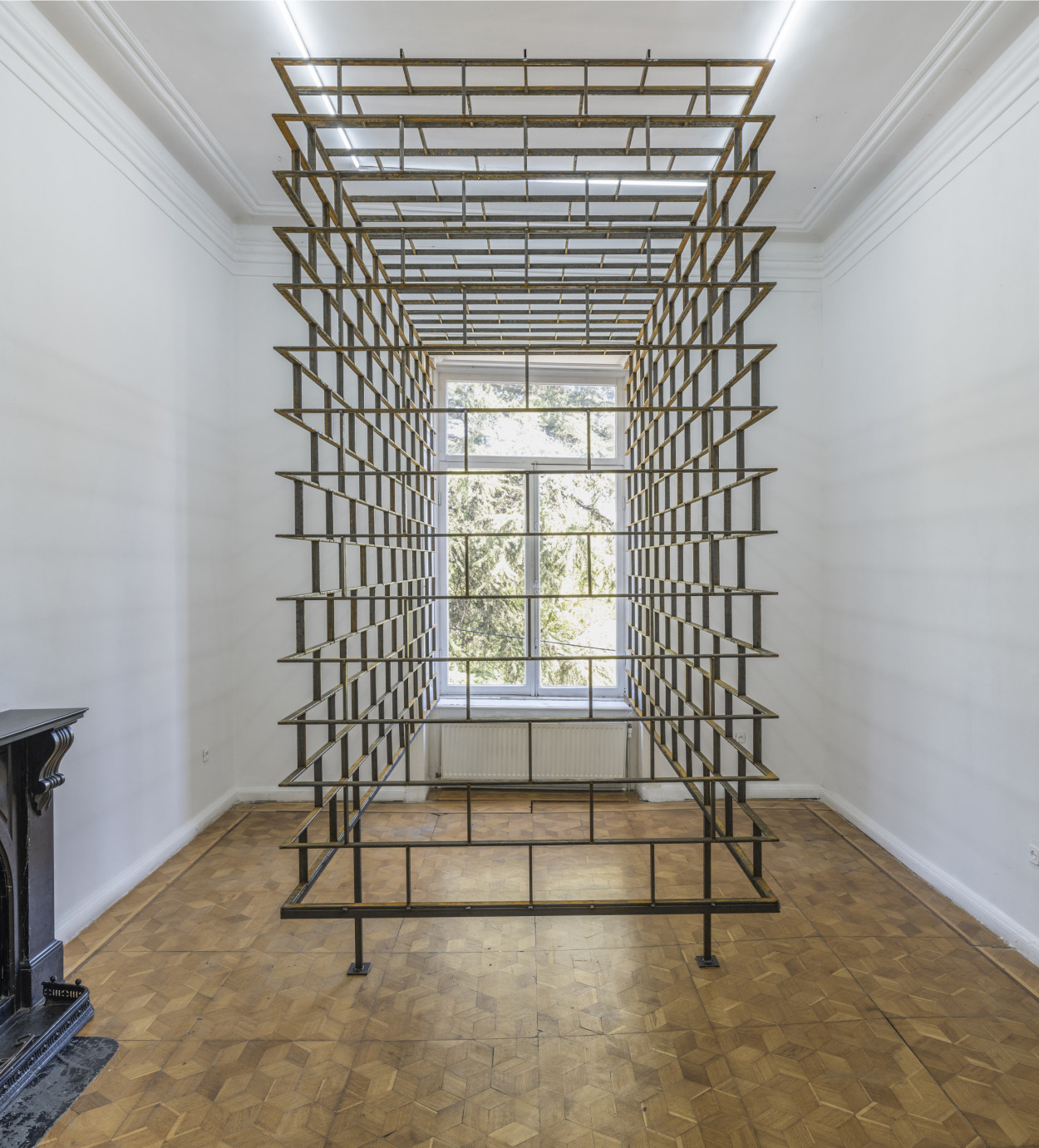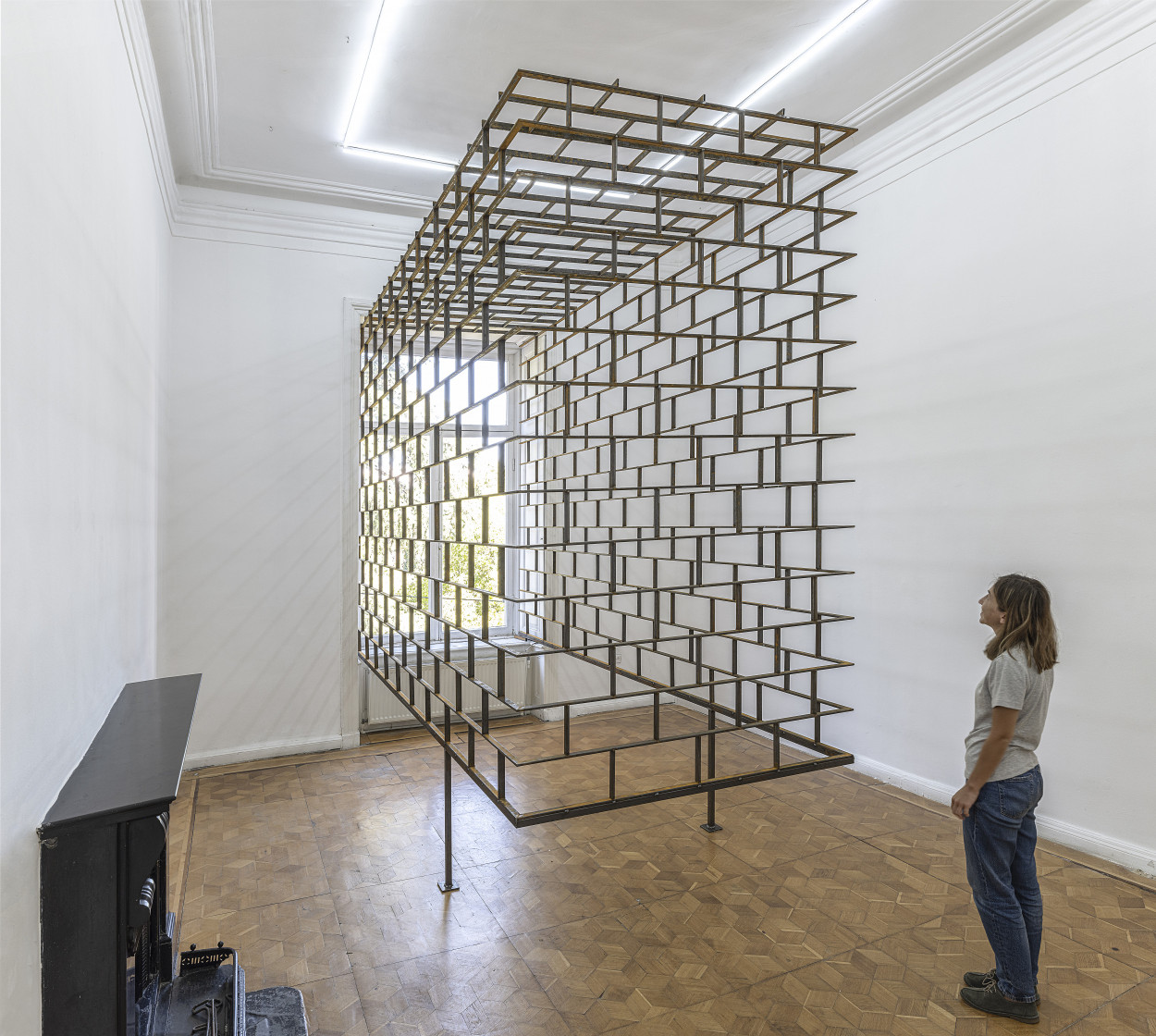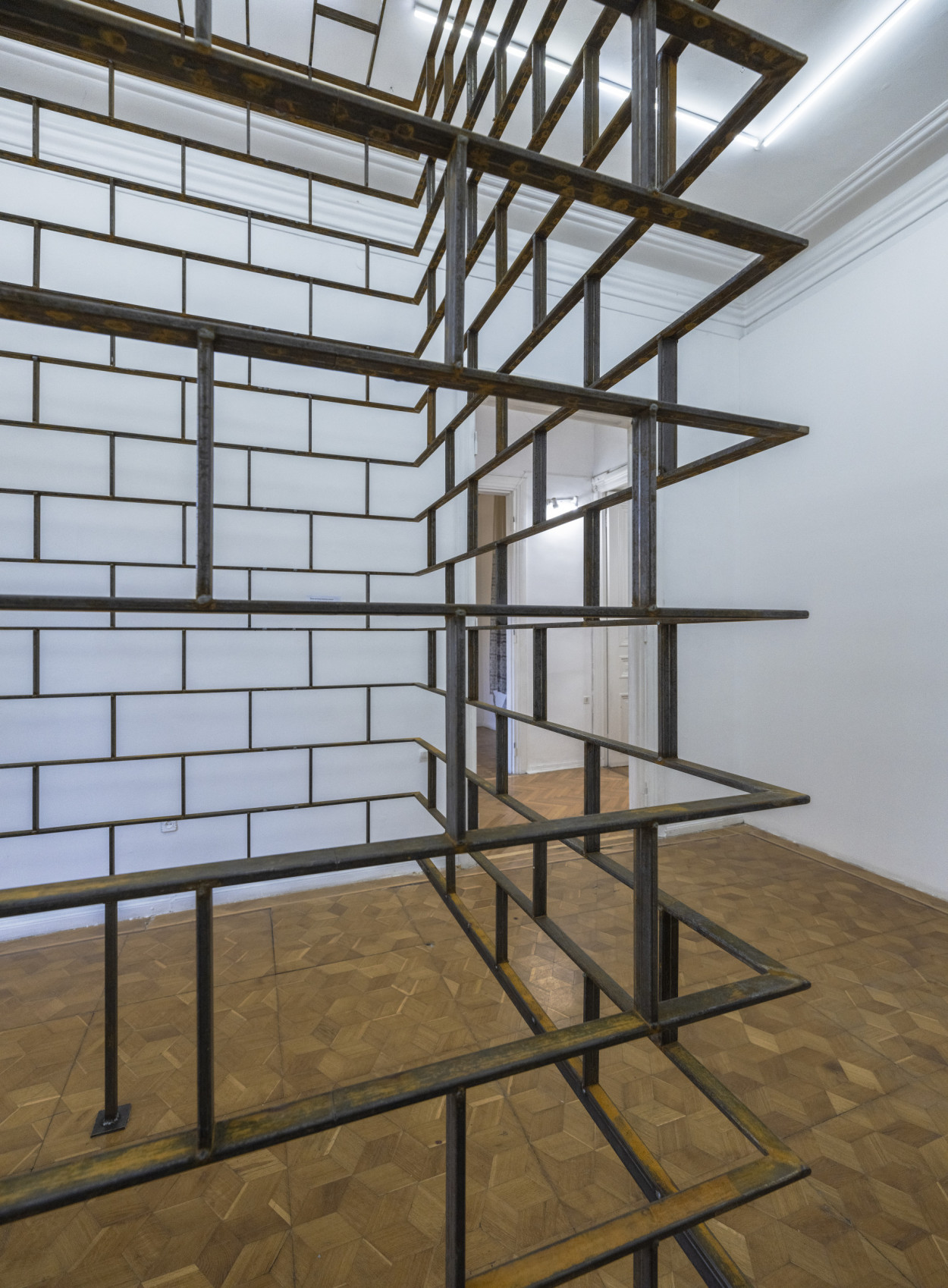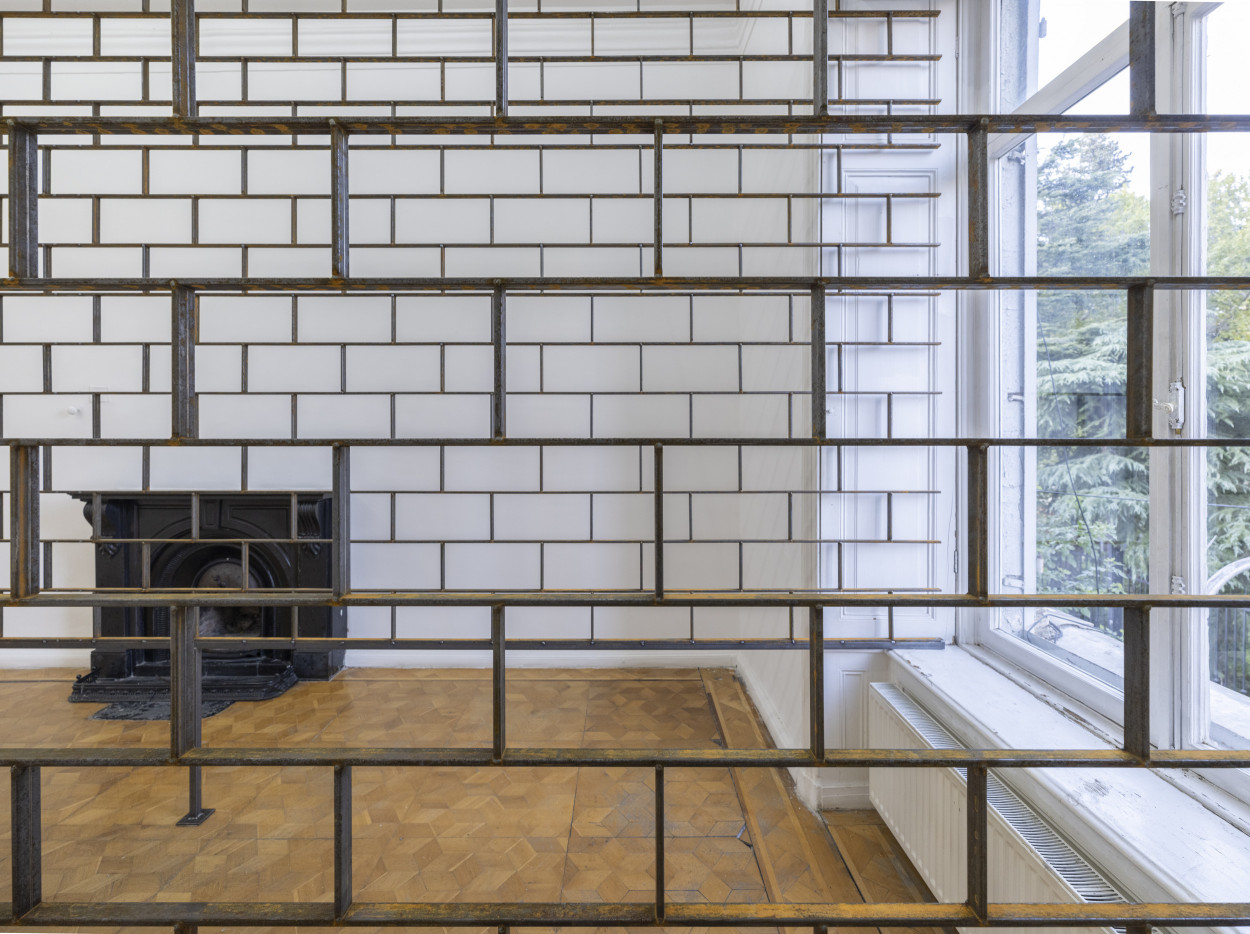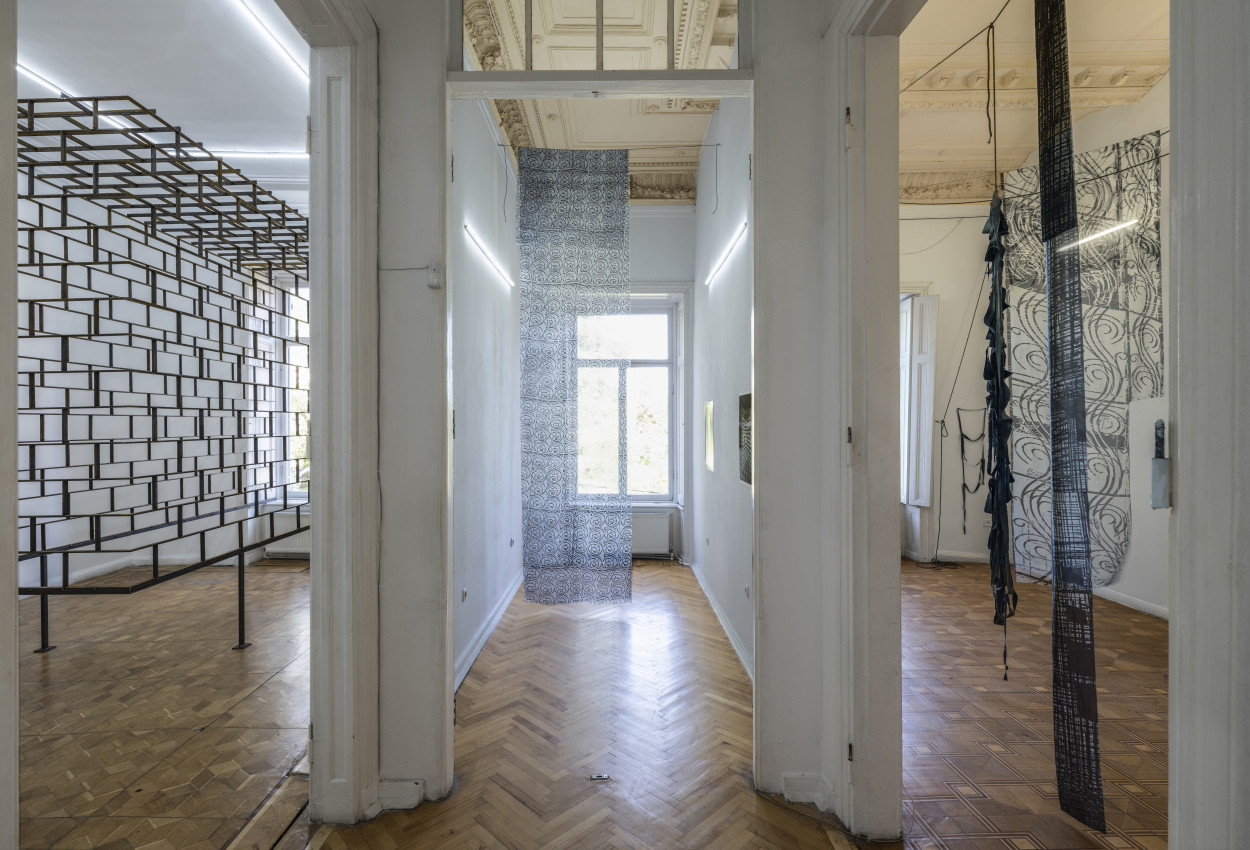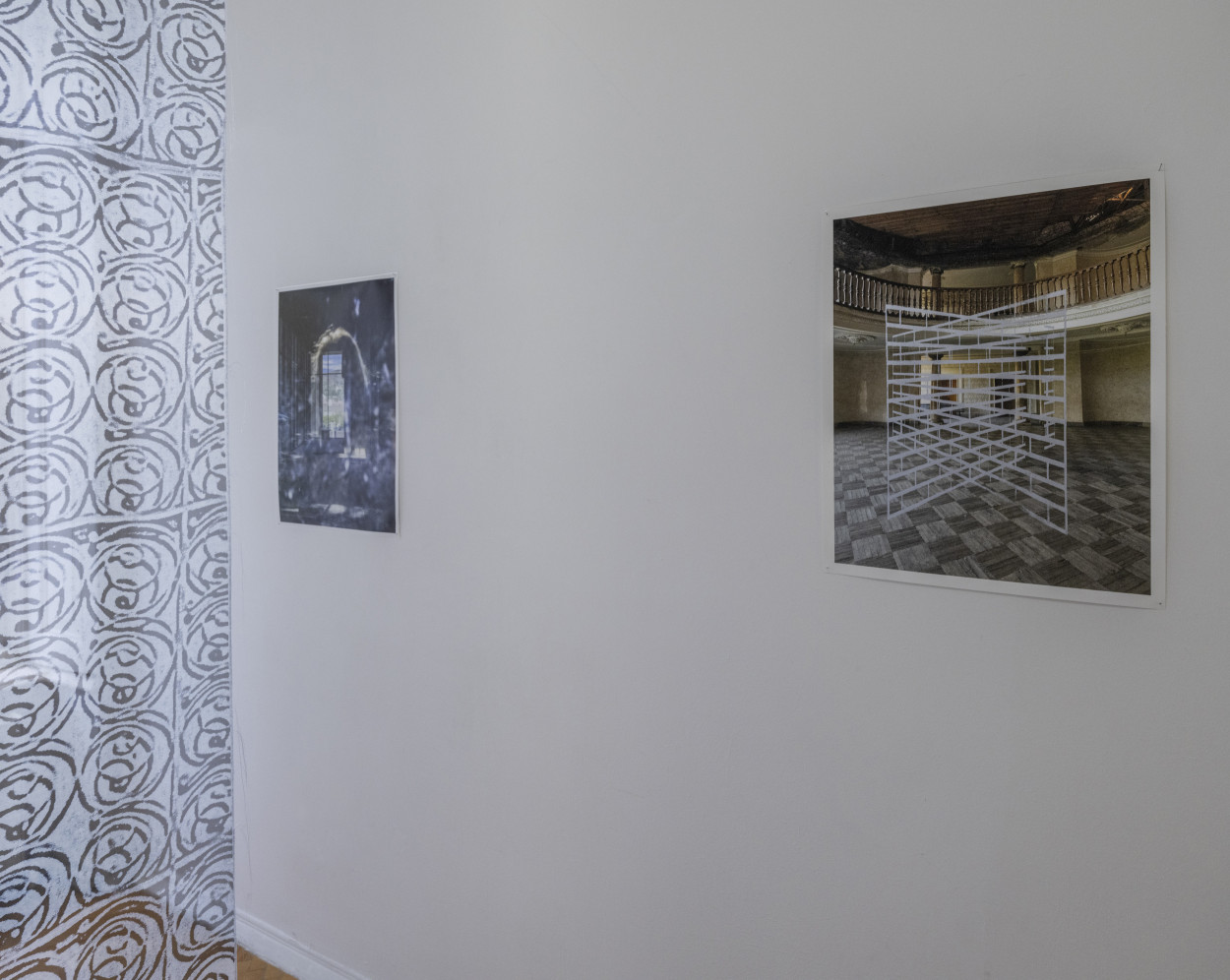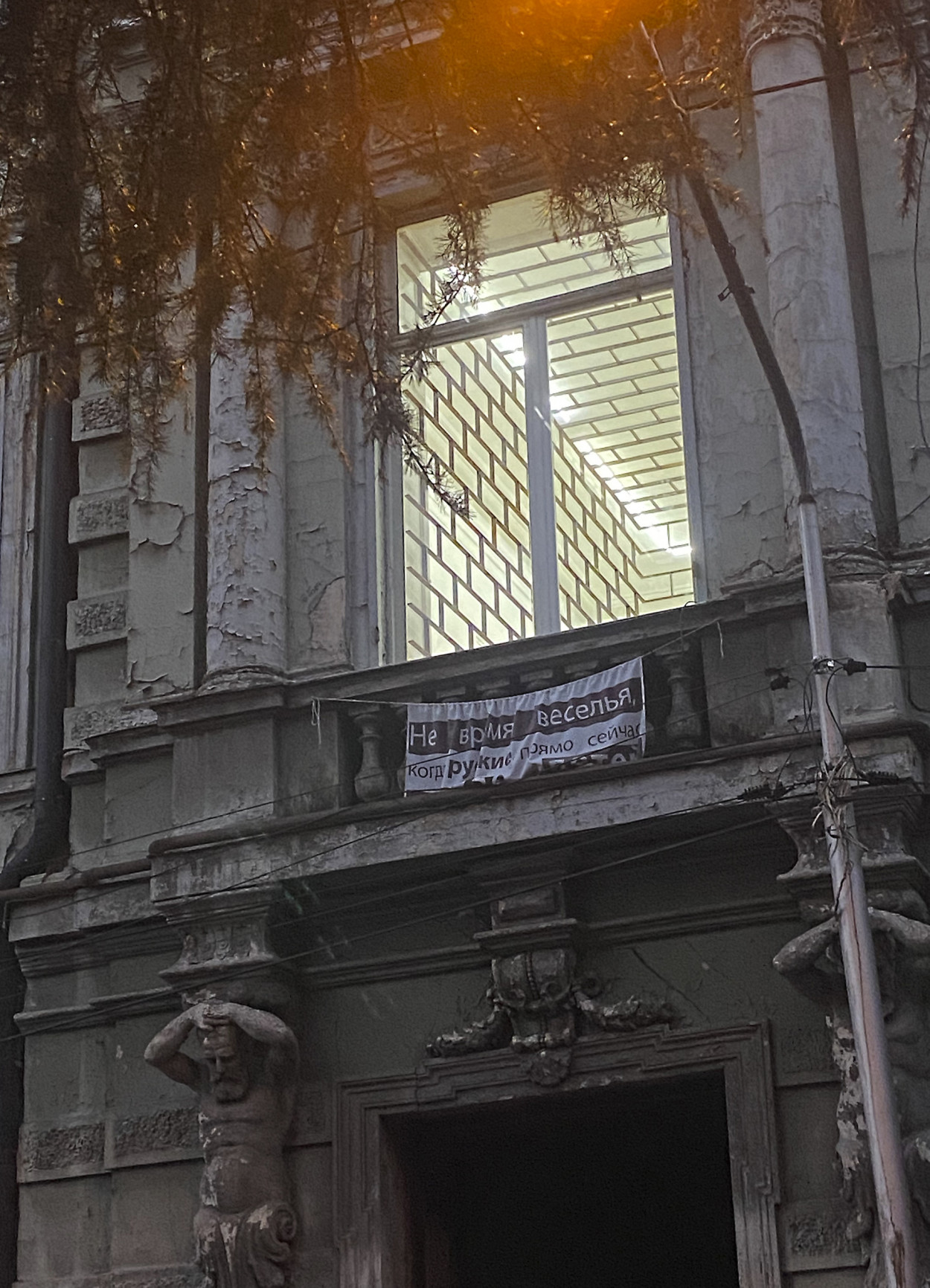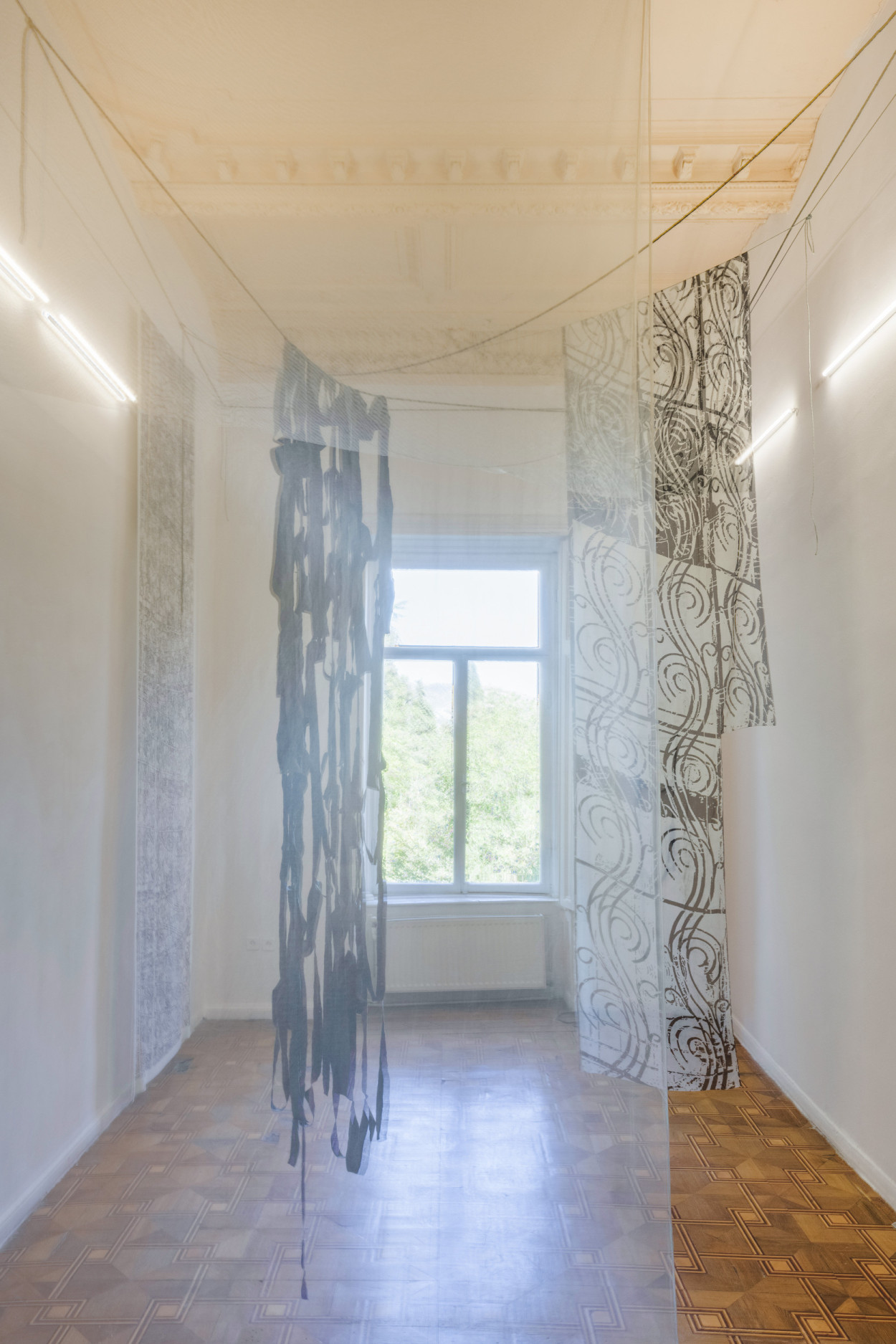PATTERNS OF (IN)SECURITY, 2023
Kunsthalle Tbilisi
Temporary Installation
2023
Kunsthalle Tbilisi is delighted to present Patterns of (In)Security, a collaborative exhibition featuring the works of Sabine Hornig and Tamuna Chabashvili. Hosted in partnership with Gallery Artbeat, the exhibition will be held at the gallery space. Patterns of (In)Security delves into the theme of evolving social and political perspectives within the constructed environment, with a special emphasis on the impact of borders and the window as a mediator between the public and the private, the visible and the concealed.
Sabine Hornig's installations are known for their ability to challenge established architectural hierarchies and provide viewers with a truly unique spatial experience. Through the dynamic interplay of transparent planes and meticulously crafted or photographed window vistas, the artist creates captivating overlays of multiple spatial and temporal contexts. These overlapping elements effectively blur the boundaries between collective memory and personal observation.
For the Kunsthalle Tbilisi exhibition, Hornig presents her sculptural work titled Inverted Window, drawing inspiration from the traditional window and balcony grilles commonly found in Tbilisi. These grilles extend the private space outward, bridging the realms of semi-public and semi-transparent domains. The installation itself encompasses an entire window, where the shape of the window opening is brought inward as an elongated grille. This inverted form, akin to a retracted organ in the body, establishes a space within a space, evoking a compelling sense of paradox and introspection. The concept underlying the installation extends beyond the mere physical portrayal of a window grille. It serves as a reflection of the political strategy of distorting truths and manipulating boundaries to exert control. By drawing parallels to the recurring acceptance of political despotism and unchecked authority, Hornig brings attention to the fragile nature of social participation and the potential danger of paradoxical thinking.
In addition to the sculptural piece, the exhibition includes photographic works featuring window motifs from Tbilisi. These images capture glimpses into spaces that are undergoing construction, juxtaposed with reflections of the contemporary cityscape. Through the medium of glass, different states and temporalities appear to converge, creating a painterly tapestry of interwoven narratives.
Tamuna Chabashvili's artistic concerns revolve around the ephemerality and vulnerability of humancreated systems, particularly patterns and networks. Her artistic practice centers on archiving and tracing, with textiles often serving as a grid in her projects. By incorporating textiles, Chabashvili brings together disparate elements and provides a contextual framework that acts as a repository of tactile and visual information. For this exhibition, Chabashvili drew inspiration from a camouflage net woven by Ukrainian women for military purposes, which she encountered in the news. The artist was captivated by the torn fragments of colorful fabric attached to the net which possessed an aura of fragility, yet exuded a profound strength. The camouflage net resembled a wish tree adorned with small strips of colorful fabric, symbolizing hope. Both the camouflage net and the wish tree represent various forms of protection, whether physical or spiritual. As Chabashvili explored deeper into the functionality of the net, she began to perceive it as a transient structure—an enduring support system that can be grasped, contained, or built upon during times of necessity. This perspective prompted the artist to examine the notion of temporality as an ongoing state through the lens of individual vulnerability.
Her installation, titled Patterns of (In)security, which also serves as the exhibition's namesake, is characterized by its delicate and intricate structure. It features ropes extended across the room and patterns of window grills printed on fabrics that evoke a sense of instability and self-exposure. Instead of providing protection and a feeling of security or empowerment, these elements become delicate and pliable, akin to a net stretching into space. Simultaneously, each component works to anchor and define itself within the space. In this context, temporality emerges as a lasting condition that engenders a sense of precariousness and fragility, while also permitting creativity and adaptability.
The exhibition is funded by IFA (Institute for Foreign Cultural Relations, Germany) and Kunsthalle Tbilisi
